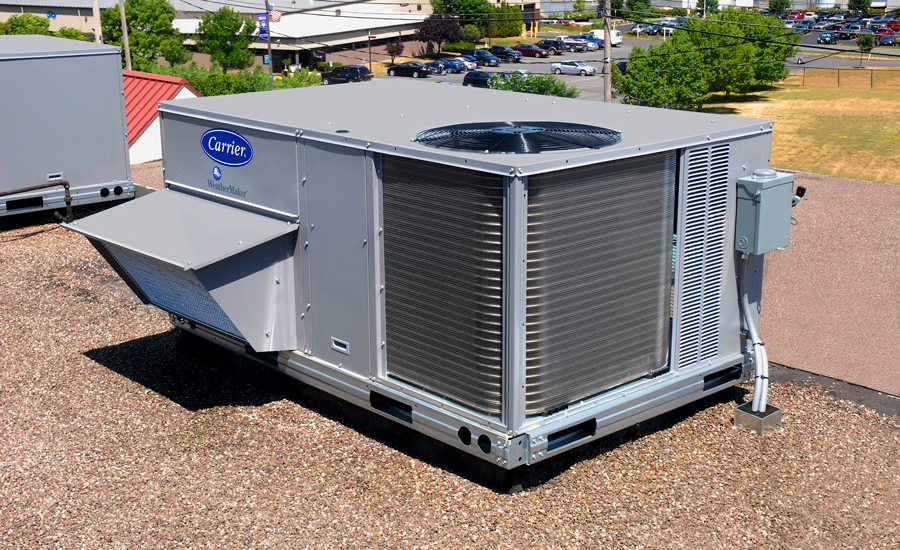What is RoofTop Unit
What exactly is an RTU?
A Top Roof Unit (RTU) is a crucial piece of equipment. It is essentially an outdoor, roof-mounted air-handling unit that provides heating, ventilation, and air conditioning to the building below. RTUs connects directly to a building’s central ventilation system to circulate air and are commonly used on low-rise commercial buildings, such as restaurants, warehouses, and offices.
Importance of Replacing RTU
At Enercare, we have qualified commercial HVAC specialists to inspect your RTU to improve its efficiency. By replacing or upgrading your RTU, you could increase energy efficiency to help save on your energy consumption, improve comfort for employees and customers in your establishment, and reduce your impact on the environment by reducing your carbon footprint.
Key Indicators of When to Upgrade
• Higher Electricity Bills Than Normal
• Odd Noises Coming from the RTU
• HVAC Costly Repairs
• Frequent Breakdown
Industry List
Condos
Strip Plazas
Restaurants

Technological Highlights
High-efficiency rooftop units (RTUs) use the same condensing combustion technology that has been used in various HVAC product lines for years, ranging from gas-fired home furnaces to hot water/steam boilers in the residential and industrial sectors. All packaged gas heating and electric air conditioning RTUs, frequently used for space conditioning in low-rise commercial and institutional buildings, can benefit from condensing heating technology.
- Industry leading products, featuring brands like Armstrong Air, GSW and Rinnai
- NEW energy-efficient equipment to offset your carbon footprint
- Quality installations done right the first time
- HVAC maintenance to keep your equipment safe and efficient
- Performed by fully-licensed and insured technicians
- Priority service through our 24/7/365 call centre
If you need to buy or rent a brand-new high-efficiency
- Utility rebates application support on eligible equipment
- Invest in other business improvement projects
- No-cost transfer on sale of property
Our Rooftop Unit Installation Procedure
Conduct a site assessment to evaluate HVAC requirements and calculate accurate heating and cooling loads for the space.
Inspect and prepare the rooftop structure, reinforcing it if necessary to support the weight and vibration of the unit.
Install a rooftop curb or platform according to manufacturer specifications and local building codes.
Use a crane to lift and position the unit securely onto the curb, ensuring proper alignment and mounting.
Connect ductwork and electrical systems, including supply/return ducts, power supply, and control wiring.
Install refrigerant and condensate lines, if required, ensuring leak-free and properly sloped drainage.
Test and commission the system, verifying airflow, thermostat communication, refrigerant charge, and overall performance.
Complete a final inspection to ensure the installation complies with safety standards, codes, and client expectations.
Rooftop Unit Repair Process
Over time, rooftop HVAC units can experience issues due to weather exposure, mechanical wear, or lack of maintenance. Our expert technicians follow a precise process to diagnose and resolve problems efficiently, minimizing downtime and ensuring reliable performance.
Diagnose the issue by inspecting for symptoms like no cooling, unusual noises, or poor airflow. We use advanced tools to check refrigerant levels, electrical faults, and sensor performance.
Inspect components such as compressors, fans, coils, filters, belts, and wiring to identify any damage or wear.
Repair or replace faulty parts, including common components like motors, contactors, capacitors, and damaged wiring.
Clean and recalibrate the unit, ensuring coils, filters, and drain lines are clear, and controls or thermostats are correctly configured.
Test system operation to confirm proper airflow, temperature control, and overall functionality.
Perform a final safety and performance check to ensure the system is running at peak efficiency and meets all standards.
We provide clear service reports and recommend any preventive steps to help extend the life of your rooftop unit.
Rooftop Unit Care & Preventive Upkeep
Regular maintenance is essential to keep rooftop HVAC units operating efficiently and to prevent costly breakdowns. Our maintenance service is designed to protect your investment, improve energy efficiency, and extend equipment life.
Perform a full system inspection, checking for wear, corrosion, loose connections, and potential issues before they become major problems.
Clean coils and components, including condenser and evaporator coils, to ensure optimal heat transfer and prevent airflow restrictions.
Replace air filters and check air distribution to maintain indoor air quality and efficient system performance.
Test electrical connections and controls, tightening terminals, checking amperage, and verifying thermostat accuracy.
Inspect and clear drain lines to prevent water buildup, leaks, or potential mold growth.
Check refrigerant levels and pressure, ensuring proper charge for effective cooling and heating.
Lubricate moving parts such as fan motors and belts to reduce friction and avoid early wear.
Provide a maintenance report outlining the system’s condition and any recommendations for repairs or upgrades.
Scheduled rooftop unit maintenance not only lowers energy bills but also reduces emergency repair calls and helps ensure uninterrupted comfort throughout the year.
Testimonials
Honest Reviews from our Customers

Jane Anderson
Homeowner, San Diego
FAQs
What is a Rooftop Unit (RTU)?
A rooftop unit is a type of HVAC system installed on the roof of a building. It typically includes heating, cooling, and air handling components in one compact unit.
Can RTUs be upgraded for better energy efficiency?
Yes, older rooftop units can often be retrofitted with modern components like variable-speed motors, economizers, or smart thermostats to reduce energy use and operating costs.
How often should a rooftop unit be serviced?
It’s recommended to have RTUs professionally inspected and maintained at least twice a year — ideally before summer and winter seasons — to ensure optimal performance and efficiency.

